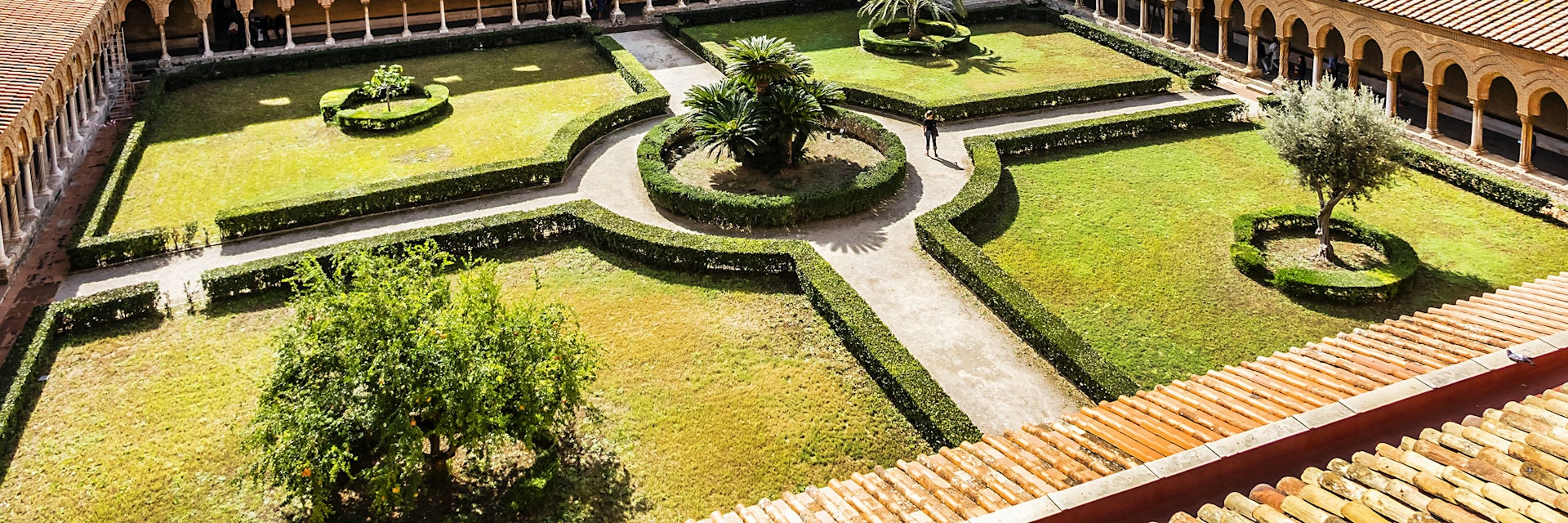Inspired by a vision of the Virgin and determined to outdo his grandfather Roger II, who was responsible for the cathedral in Cefalรน and the Cappella Palatina in Palermo, William II set about building the Cattedrale di Monreale, 8km southwest of Palermo. Incorporating Norman, Arab, Byzantine and classical elements, the cathedral is considered the finest example of Norman architecture in Sicily. It's also one of the most impressive architectural legacies of the Italian Middle Ages.
Although the cathedral's mosaicists hailed from Sicily and Venice, the stylised influence of the Byzantines pervades their work. Completed in 1184 after only 10 years' work, their shimmering masterpieces depict biblical tales, from the creation of man to the Assumption, in 42 different episodes. The beauty of the mosaics cannot be overstated โ you have to see for yourself Noah's ark perched atop the waves or Christ healing a leper infected with large leopard-sized spots. The story of Adam and Eve is wonderfully portrayed, with a grumpy-looking, post-Eden-eviction Eve sitting on a rock while Adam labours in the background. The large mosaic of Christ, dominating the central apse, is stunning. Binoculars make viewing the mosaics easier, although they are still impressive to the naked eye. For a guide to the various scenes, print out the handy key and map at www.seepalermo.com/monrealekeyprint.htm.
Adjacent to the cathedral is the entrance to the cloister, which illustrates William's love of Arab artistry. This tranquil courtyard is an ode to Orientalism, with elegant Romanesque arches supported by an array of slender columns alternately decorated with shimmering mosaic patterns. Each capital is unique, and taken together they represent a sculptural record of medieval Sicily. Especially interesting is the capital of the 19th column on the west aisle, depicting William II offering the cathedral to the Madonna.
For a bird's-eye view of the cloister, its geometric garden and the cathedral's mountainous surrounds, climb the stairs to the cathedral's terrace, accessed from inside the cathedral.
